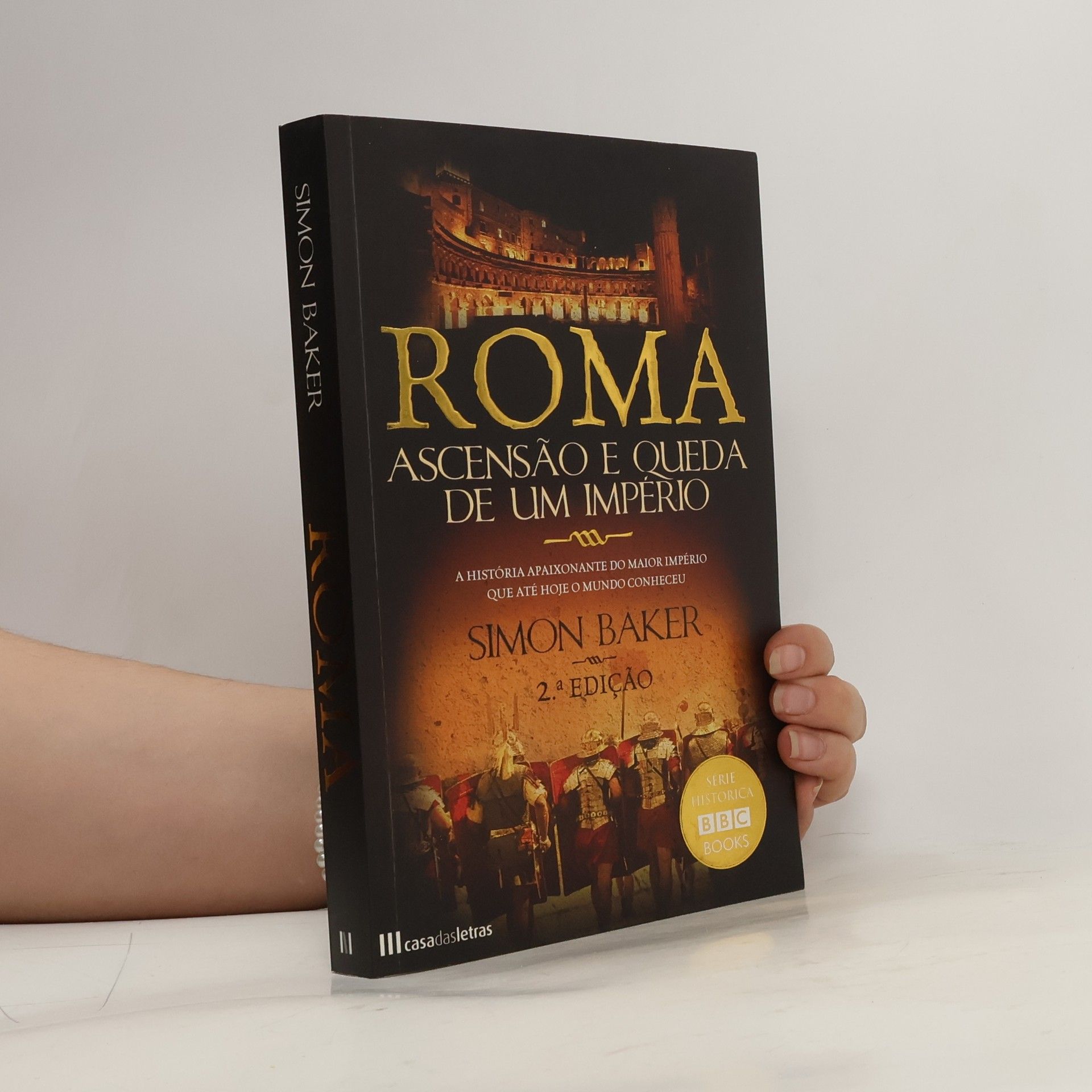BIOS Instant Notes in Microbiology
- 352 pages
- 13 hours of reading
Rev. ed. of: Microbiology / S. Baker ... [et al.]. 3rd ed. 2007.






Rev. ed. of: Microbiology / S. Baker ... [et al.]. 3rd ed. 2007.
This is the story of the greatest empire the world has ever known. Simon Baker charts the rise and fall of the world's first superpower, focusing on six momentous turning points that shaped Roman history. Welcome to Rome as you've never seen it before - awesome and splendid, gritty and squalid. From the conquest of the Mediterranean beginning in the third century BC to the destruction of the Roman Empire at the hands of barbarian invaders some seven centuries later, we discover the most critical episodes in Roman history- the spectacular collapse of the 'free' republic, the birth of the age of the 'Caesars', the violent suppression of the strongest rebellion against Roman power, and the bloody civil war that launched Christianity as a world religion. At the heart of this account are the dynamic, complex but flawed characters of some of the most powerful rulers in history- men such as Pompey the Great, Julius Caesar, Augustus, Nero and Constantine. Putting flesh on the bones of these distant, legendary figures, Simon Baker looks beyond the dusty, toga-clad caricatures and explores their real motivations and ambitions, intrigues and rivalries. The superb narrative, full of energy and imagination, is a brilliant distillation of the latest scholarship and a wonderfully evocative account of Ancient Rome.
The definitive monograph of the outrageous, unorthodox New York painter George Condo With his arresting, unsettling style, George Condo emerged from the dynamism of the New York art scene in the early 1980s, and he has been restlessly painting, drawing, and sculpting—bringing forms into the world in one way or another—ever since. Reliably inconsistent, Condo’s references and inspirations, in both style and content, ricochet deliriously around the canon of Western art history. Somewhere between his fake Tiepolos, reconfigured Manets, impossibly intricate paintings that seem to be abstract until you get up close, and his perpetually screaming cubist hags, Condo has invented, mastered, and expanded not just one painterly language but the whole lexicon. Working closely with the artist, writer and art historian Simon Baker has combined biographical, chronological, and thematic approaches to survey George Condo’s work and career to date. An introductory essay on Condo’s contradictory nature and a chapter exploring his early career are followed by three thematic chapters that look at the years from 1980s to the present, tracing Condo’s different systematic approaches to the language of painting, exploring his relationship to the concept of abstraction, and probing the darker side of his psychological iconography.
The work of Issei Suda (1940-2019) is distinct in contemporary avant-garde Japanese photography for its celebration of the beauty of theeveryday. His black-and-white pictures reflect on the apparent banality ofurban life, capturing "the little surprises usually ignored in our world": theshadow of a figure, the shapes of the street, the expressions on strangers' faces. Suda's practice revealed the tensions between old and new Japan,juxtaposing the ingrained visual traditions of Japanese culture with theprevailing western vocabulary of fashion, advertising, and leisure, as seenthrough his observant and tender lens.
Esta é a história do maior império que até hoje o Mundo conheceu. Nela, Simon Baker conta a história da ascensão e da queda da primeira superpotência global, concentrando-se nos seis pontos de viragem fundamentais que deram forma à história de Roma. Sejam bem vindos a uma Roma que nunca antes viram: terrível e esplêndida, enérgica e sórdida. No centro desta apaixonante narrativa histórica estão as personalidades dinâmicas e complexas, mas também imperfeitas, dos mais poderosos senhores de Roma: homens como Pompeu, o Grande, Júlio César, Augusto, Nero e Constantino. Esta soberba narrativa, repleta de energia e de imaginação, é um inteligente resumo dos mais recentes estudos e trabalhos académicos e um relato maravilhosamente evocativo da Roma Antiga.
Von wissenschaftlichen Entdeckungen bis hin zu animistischen Vorstellungen, von der Furcht vor genetischen Veränderungen bis zu politischen Narrativen, vom Widerwillen zur Faszination - an Pflanzen macht sich eine unerschöpfliche Menge von Geschichten fest, in denen sich unsere intimsten Wünsche und Ängste offenbaren. Dieses Buch fragt nach den menschlichen Projektionen und Repräsentationen der Pflanzenwelt und es zeigt die Innerlichkeit, die Intelligenz und die Aus- drucksfähigkeiten von Pflanzen. Davon zeugen vor allem fotografische und filmische Bilder. Die Publikation zeichnet die visuelle Geschichte der Pflanzen nach, in der Kunst, Technologie und Wissenschaften von der Mitte des 19. Jahrhunderts bis in die Gegenwart zusammenspielen. Ihre Erzähllogik entspricht dabei der eines Science-Fiction-Romans, da sie uns in einer verlässlichen, wiedererkennbaren Welt abholt, um uns dann allmählich in unsicherere Gegenden zu führen. Sie verfährt dabei nicht chronologisch, sondern orientiert sich an zwei grundlegenden Konzepten: Wissenschaft und Fiktion. Das Buch enthält Werke von über 30 Künstler·innen aus unterschied- lichen Zeiten und Orten.Die Ausstellung, kuratiert von Clothilde Morette und Victoria Aresheva, zeigt Werke u. a. von Anna Atkins, Karl Blossfeldt, Elspeth Diederix, Sam Falls, Joan Fontcuberta, Stephen Gill, Jochen Lempert, Angelica Mesiti, Agnieszka Polska, und Anais Tondeur.
Krótkie wykłady Mikrobiologia, wydanie czwarte, to publikacja dla studentów poszukujących zwięzłego wprowadzenia do tematu lub podręcznika do nauki do wykorzystania przed egzaminami. Każdy temat zaczyna się od podsumowania podstawowych faktów - listy kontrolnej powtórki – po którym następuje opis tematu, który koncentruje się na podstawowych informacjach, z jasnymi, prostymi diagramami, które są łatwe do zrozumienia i przypomnienia. Krótkie wykłady Mikrobiologia obejmuje tematy takie jak: Świat drobnoustrojów Systematyka Mikrobiologia Wzrost drobnoustrojów Metabolizm drobnoustrojów Metabolizm DNA i RNA u prokariotów Mikrobiologia przemysłowa Drobnoustroje eukariotyczne – przegląd Grzyby i grupy spokrewnione Archaeplastida, Excavata, Chromalveolata, Amoebozoa Wirusy
Katalog výstavy pořádané v Císařské konírně Pražského hradu 15. 9. - 19. 11.2000.